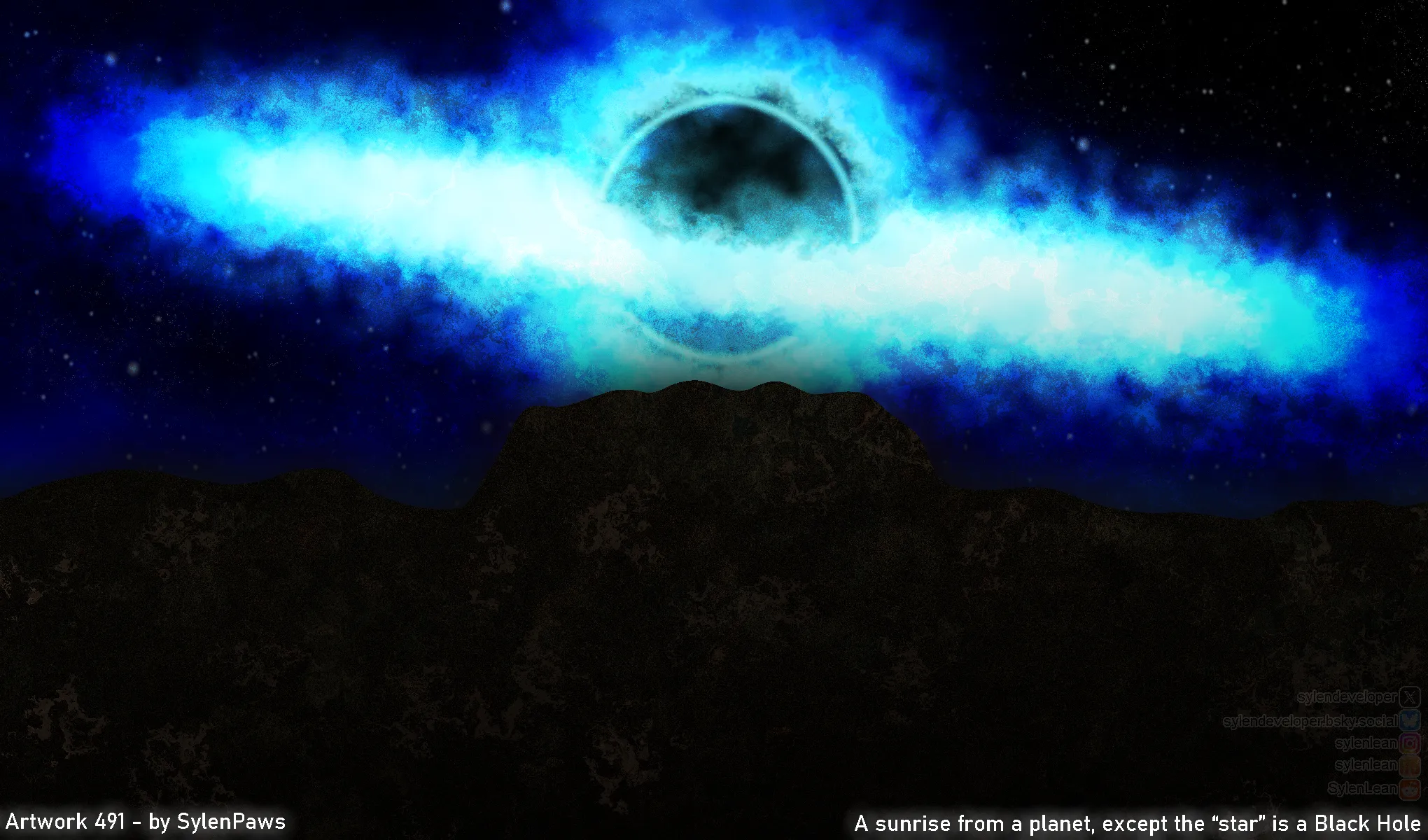The Unimaginable Dawn: Art Exploring a Planet Orbiting a Black Hole
For centuries, our understanding of a "sunrise" has been anchored to the familiar glow of our own Sun. But what if the source of light was something far more enigmatic, far more powerful, and utterly alien? A recent piece of digital artwork, titled "Artwork 491: A sunrise from a planet, except the 'star' is a Black Hole," challenges this very notion, inviting us into a mind-bending cosmic scenario.
A Glimpse into the Artist's Process
Created by a talented artist using Paint dot NET and completed in a mere 23 minutes, this piece is a testament to rapid conceptualization and execution. The artist poses a fascinating question: what would a dawn look like if the central illuminating body wasn't a star, but a black hole? The resulting image is a powerful visual paradox, blending the serene beauty of a planetary landscape with the terrifying majesty of one of the universe's most extreme phenomena.

Image: Artwork 491, depicting a sunrise from a planet orbiting a black hole.
Science Meets Imagination: The Reality of a Black Hole "Sun"
While the artwork is a brilliant exercise in imagination, it prompts us to consider the science. Could a planet truly orbit a black hole and experience a "sunrise"?
-
The Light Source: Black holes themselves don't emit light. The "glow" we often associate with them comes from their incredibly hot
accretion disks– swirling masses of gas and dust that are being pulled into the black hole. These disks can shine brighter than entire galaxies in X-ray and visible light. So, a "sunrise" in this context would be the emergence of this luminous accretion disk above the horizon. -
Gravitational Lensing: Near a black hole,
gravitational lensingwould be extreme. Light from the accretion disk, or even distant stars, would be bent and distorted, creating surreal visual effects. The artwork subtly hints at this, with the intense glow. -
Habitability Challenges: The biggest hurdle for life would be the extreme environment. The fierce radiation from the accretion disk, powerful tidal forces that could rip a planet apart, and the lack of a stable energy output like a star's fusion would make habitability incredibly difficult, if not impossible. Any planet would need to orbit at a safe, considerable distance – likely much further than the depicted close proximity for a "sunrise" effect – to avoid being consumed or irradiated.
The Power of Astronomical Art
This artwork, despite its speculative nature, serves as a powerful reminder of the universe's incredible diversity and the limits of our current understanding. It's a prime example of how artistic expression can push the boundaries of scientific thought, inspiring us to ponder scenarios that are both beautiful and terrifyingly immense. It sparks conversation not just about art, but about theoretical physics, astrophysics, and the very nature of existence beyond our solar system. What incredible views might exist out there, even if only in our wildest cosmic dreams?




